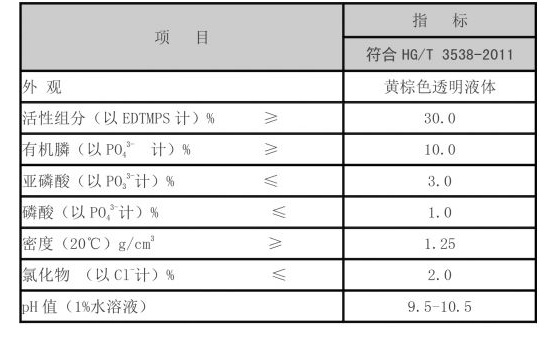Synthesis and Applications of Diethylene Triamine Pentamethylene Phosphonic Acid in Water Treatment
The Significance of Diethylenetriamine Penta (Methylene Phosphonic Acid) in Modern Applications
Diethylenetriamine penta(methylene phosphonic acid), commonly referred to as DTPMPA, is an innovative chelating agent notable for its unique chemical structure and versatile applications across various industries. As a phosphonic acid derivative, DTPMPA possesses five phosphonic acid groups attached to a diethylenetriamine backbone, which enhances its capability to bind metal ions effectively. This characteristic makes it a critical component in water treatment, agriculture, and industrial processes, particularly in contexts that require the stabilization of metal ions.
In the realm of water treatment, one of the most significant challenges is the prevention of scale formation and corrosion in pipes and equipment. DTPMPA functions as a powerful scale inhibitor, effectively binding calcium, magnesium, and other divalent metal ions that are typically responsible for scaling. By sequestering these ions, DTPMPA not only prevents scaling but also aids in maintaining the efficiency of equipment by ensuring smooth operation. This application is particularly vital in cooling water systems, boiler systems, and industrial wastewater treatment facilities, where maintenance costs and efficiency are pivotal factors.
Moreover, DTPMPA’s role extends to agricultural applications, particularly in fertilizer formulations. The compound helps improve the bioavailability of essential nutrients such as phosphorus and other trace metals to plants. By chelating these nutrients, DTPMPA enhances their absorption through plant roots, leading to improved crop yields and increased agricultural productivity. The use of DTPMPA in fertilizers also aligns with sustainable agricultural practices by maximizing nutrient delivery while reducing potential runoff and environmental impact.
diethylene triamine penta methylene phosphonic acid

In the realm of industrial processes, DTPMPA is often incorporated into formulations where metal ion stabilization is crucial. For instance, in the formulation of detergents and cleaning products, it helps maintain product efficacy by preventing metal ions from interfering with the cleaning action. Additionally, due to its excellent thermal stability and resistance to hydrolysis, DTPMPA is favored in high-temperature applications where other chelating agents might degrade.
Another critical area of application is in the oil and gas industry, where DTPMPA serves as a scale and corrosion inhibitor in the extraction and processing of oil and gas. The presence of divalent metal ions in production waters can lead to significant scaling issues that affect production efficiency. DTPMPA is utilized to manage these challenges, ensuring smooth operation and mitigating the risk of costly downtime due to maintenance.
The environmental safety of DTPMPA is also a noteworthy aspect. Compared to traditional phosphates, DTPMPA exhibits lower toxicity and a reduced propensity for eutrophication. This is particularly beneficial in applications that discharge effluents into sensitive ecosystems, helping to protect aquatic life from potential harm associated with phosphate pollution.
In conclusion, diethylenetriamine penta(methylene phosphonic acid) stands out as a critical component in modern applications due to its chelating properties and versatility across various industries. From enhancing water treatment efficiency and supporting agricultural productivity to stabilizing industrial formulations, DTPMPA is indispensable in addressing some of the pressing challenges faced today. Its increasing adoption reflects a broader commitment to sustainability and efficient resource management, ensuring its relevance in the decades to come. As research continues to evolve, the potential applications of DTPMPA may expand even further, solidifying its place as a vital player in the field of chemistry and environmental science.
-
Water Treatment with Flocculant Water TreatmentNewsJun.12,2025
-
Polymaleic AnhydrideNewsJun.12,2025
-
Polyaspartic AcidNewsJun.12,2025
-
Enhance Industrial Processes with IsothiazolinonesNewsJun.12,2025
-
Enhance Industrial Processes with PBTCA SolutionsNewsJun.12,2025
-
Dodecyldimethylbenzylammonium Chloride SolutionsNewsJun.12,2025





